Text
Storytime for Grownups - a podcast reading of Jane Eyre
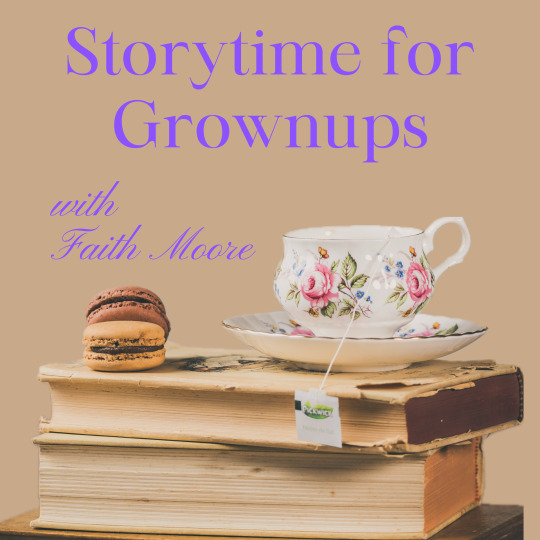
I recently received an email from Faith Moore, creator and podcaster of Storytime for Grownups, who is releasing a free podcast audiobook version of Jane Eyre - with commentary to help readers understand some of the out-dated references and words. I just started listening to the show and love Faith's voice for Jane - it's very welcoming and serene. And this seems like something all readers and Jane Eyre fans can enjoy - for the fans it's nice to hear someone read the story with background information, and for any new or young readers this might be a great way to understand the story better as they listen.
I asked Faith some questions about her experience reading Jane Eyre and her podcast. Please enjoy the mini-interview below, and listen to her show wherever you find podcasts!
1. What is your "Jane Eyre" origin story? When/Why did you first read the novel and what were your first impressions?
I think I was around twelve years old when I first read Jane Eyre. It wasn’t at all the kind of book that I normally read at that age. I loved to read, but I struggled with “old fashioned” books. The language always felt inaccessible to me and I could never really get into the classics—I was much more comfortable with The Babysitter’s Club or Matilda. But my family took me to see a stage production of Jane Eyre and I absolutely loved it. I fell immediately in love with Mr. Rochester and could tell—at a visceral level—that this was a great story. So I found a copy of the book on my parents’ bookshelf, pulled it down, and began to read. The things we do for love—love of Mr. Rochester I mean! The language was still really hard for me to understand, the bits of the plot that didn’t involve Mr. Rochester dragged, but it was all worth it for those Jane and Rochester scenes. I read the whole thing and I’ve never looked back. And, over time—and many re-readings—I’ve come to love the book in its entirety. To my mind, it’s a work of genius.
2. Favorite quote from Jane Eyre (you can pick just the first one that pops into your mind!)
I return to the proposal scene again and again. The ribbon bookmark in my favorite copy of the book (I own four copies) always marks it.
“Are you in earnest? Do you truly love me? Do you sincerely wish me to be your wife?”
“I do; and if an oath is necessary to satisfy you, I swear it.”
“Then, sir, I will marry you.”
“Edward—my little wife!”
“Dear Edward!”
“Come to me—come to me entirely now,” said he; and added, in his deepest tone, speaking in my ear as his cheek was laid on mine, “Make my happiness—I will make yours.”
3. What made you decide to start Storytime for Grownups and have you podcasted before?
This is my first podcast! The idea for the show came to me because of my own struggles with reading the classics. You’re always being told you ought to read the classics—and you should!—but what if you literally can’t? My first idea was to somehow “translate” the old-fashioned language of classic books into modern English. But I came to feel that too much would be lost—the atmosphere and the characters are built through the language as it’s written. But then I realized that when I was an elementary school teacher, one of my favorite times in the day was storytime. When you read aloud to your students, you pause from time to time to make sure they’re still with you. You define a word, you summarize, you comment on the action. And I thought: I could do that for grownups with the classics! Each season of Storytime for Grownups, I read a book aloud, one chapter per episode. As I read, I pause from time to time to give brief explanations that make it easier to follow along. It’s like an audio book with built-in notes. Season 1 is Jane Eyre!
4. What is the most interesting thing you've learned so far while digging into the background or literary composition of Jane Eyre?
One of my favorite parts of the show is that listeners write in to ask questions about each chapter and I feature one or two questions at the start of each episode. The questions have been amazing and they’ve prompted me to delve really deeply into the text—even more deeply than I ever have before! One really interesting aspect that I’d never really delved very deeply into before is the notion of the supernatural and fairy tales/fairy stories. It’s a huge theme within Jane and Rochester’s relationship and I think it relates in a really fascinating way to Brontë’s exploration of religion and spirituality which flows throughout the entire book.
Storytime for Grownups - Listen now!
6 notes
·
View notes
Text
Jane: A Love Story - My Thoughts On A New Theater Adaptation

Jane: A Love Story ( also Jane: A Ghost Story) is a new play adaptation that is currently running at the Lamb’s Players Theatre in Coronado (near San Diego). The play is adapted by David McFadzean and stars Natasha Harris as Jane and Manny Fernandes as Mr. Rochester. Also featuring Lizzie Morse as Helen Burns, Sam Ashdown as St. John Rivers, and Caitie Grady as Blanche Ingram. It does feature a small ensemble cast so some of the cast doubled up on other parts. Also, it doesn’t say in the playbill, but I could have sworn it was a male cast member playing Bertha - I wonder if I’m right!
I was excited to see a new interpretation of Jane Eyre in my neck of the woods, and this version definitely embraced taking the story in new directions. Firstly, the play seemed unsure which aspect of the story to emphasize, as on the front of the theatre, and initially when I heard about it, it was subtitled “A Ghost Story.” Later on, and in some of the promotional material I see the subtitle “A Love Story”. This version seemed to go in between the two, as it certainly added in more eerie bits including moments when the gargoyles of Thornfield watch over certain scenes while whistling/moaning creepily. And little Adele is very much afraid of the ghosts in the third story. There is also a new scene for when Jane arrives at Millcote and is waiting to be taken to Thornfield. There, she meets a traveling couple, and she tells them that she is going to Thornfield. The woman repeatedly insists that there is the devil’s work going on there, and not to go, and warns her to ask about the cook and what happened to her. I’m not sure if I missed it, but the reference to the cook is soon dropped, and I guess she just knew too much and had to leave?
The play also placed the story of Jane in the 1920’s. So we got to see Jane dance and sing to a gramophone (I feel like the fact that Jane sings is the replacement to Jane’s piano playing for Rochester in the novel). There are also telephones, cars, and trains in this story which helps Jane travel quickly. It is cool to see how these modern additions changed the story. Although Mr. Rochester still rides in on his “horse” when he first meets Jane.
When it comes to the love story aspect of the play, I did find it a little deficient. The romance between Jane and Rochester happens very quickly - especially since when Jane meets Rochester again at Thornfield, she almost immediately asks the butler, named Buckles in this version, if he can call for the car and leave because she doesn’t want to work for such a boorish employer. It did give Jane a more empowering moment, because she could just leave an uncomfortable situation, but Mrs. Fairfax and Buckles convince Jane to stay. And yet very soon after Jane starts having feelings, and in another unique moment in the story, it seems that most people know that Jane is enamored with Rochester. Even Rochester! And even Blanche when she first meets Jane, because she takes the time to tell Jane that men like Rochester will use Jane as a plaything, but marry a more worthy woman. It was an odd change to the story, especially since it didn’t quite make sense for Rochester to play with Jane’s emotions like that. The romance could have been so much more straightforward, instead of Rochester bringing in the party and ignoring Jane at times.
And yet the chemistry between Jane and Rochester felt flat - they had some lovely moments, but because Rochester did tend to ignore her at times their relationship felt emotionally distant, with just Jane reinforcing it by pining after Rochester.
Natasha as Jane did capture Jane’s strength of character well, and even gave Jane a more accurate north of England accent. Natasha did play young Jane into adulthood, and she gave Jane more youthful excess and excitement than might have been in the book. Perhaps the stand out relationship in the play is her friendship with Helen at Lowood. Helen also matched Jane’s exuberant energy and they are “besties” very quickly in the story, bonding over a love of poetry. For the length of the play, they spent a good amount of time developing Jane and Helen’s bond and I enjoyed that. But Helen’s illness very quickly comes up, and she was soon gone.
Manny Fernandes as Rochester was… fine. He didn’t quite capture the magnetic aura of Rochester for me, but he did bring the teasing and commanding side of the character when needed. I did not feel the romance was very strong either, but that could have been just me. There were a couple fun additions to the text though and one that stood out for me was the scene the day after the proposal and Jane makes some comment about not comprehending that Mr. Rochester loves her. And Rochester replies by picking up an hourglass and saying something to the effect of:
“Love is not to be comprehended. Love is like this hourglass. (He turns the hourglass over.) As the brain empties, the heart fills up.”
In terms of other unique aspects of the story, Grace Poole has a more prominent role in the story (in keeping with the ghostly aspect) as she makes a couple of cryptic warnings directly to the audience, and in one fun moment, after we see something is happening on the third story, she turns to the audience and says “None of your business!”
Diana Rivers seems to immediately dislike Jane, and seems to think that when vagrant Jane turns up at the church that she wants to ensnare St. John into marriage and this Diana is very intent on protecting her brother. She is oddly and surprisingly antagonistic towards Jane, but we hear from Jane later that she and her become better friends. I can only guess that this take on Diana is to show that it is not entirely easy for Jane after she leaves Rochester, as her wandering of the moors is very shortened in this version.
St. John Rivers is a much kinder version, as he does seem put off by Jane not accepting his proposal, but he soon forgets it and treats her kindly. When he says the line that there is nothing to forgive, having not been offended - he actually meant it! We even see St. John (as well as Miss Temple, and Miss Scatcherd???) show up to Jane and Rochester’s wedding for a very happy ending. Also if you’ve ever wanted to see St. John dance with Miss Scatchered, this play is for you!
Overall, this was an enjoyable adaptation. Since it was a small production I enjoyed the intimacy of the theatre, and the way the audience could be brought into the story at times (St. John refers to us as his congregation when he is giving a sermon, and Mr. Rochester invites all of us to see his wife on the third floor during the interrupted wedding). While the purist in me missed a few key emotional beats of the story, the fact that this was set in a more modern time, helped explain away a few things. The play runs for one more week, so if you are in the area, definitely check it out!
5 notes
·
View notes
Text
Book Review: Wild, Beautiful, and Free

Wild, Beautiful, and Free
by Sophfronia Scott
Plot Summary:
Born the daughter of an enslaved woman and a Louisiana plantation owner, Jeannette Bébinn is raised alongside her white half sister—until her father suddenly dies. His vindictive wife refuses twelve-year-old Jeannette her inheritance and sells her into slavery. Now on her own, Jeannette must fight the injustices she faces because of her mixed race. She escapes enslavement and travels from Mississippi to Philadelphia to New York to Ohio, all while searching for purpose, love, and her place in a country torn asunder by the burgeoning Civil War. Everything seems to fall into place when she meets Christian Robichaud Colchester, the white proprietor of Fortitude Mansion, a safe haven for escaped slaves where Jeannette teaches. But despite their instant connection, Jeannette isn’t convinced she belongs in his circle. In a world that tells her she doesn’t fit anywhere, Jeannette must decide what’s more important: bending to the expectations of others or embracing her true self.
Review:
This was a surprising retelling of Jane Eyre because it brought the story into an unexpected backdrop - race and slavery during the American Civil War. The story translates the struggles of young Jane in the original novel at the hands of Mrs. Reed and Mr. Brocklehurst, to the horrific experiences of enslavement, which made Jeannette's story even more impactful.
Jeannette is just as strong willed as Jane, and has the added comfort of having known a loving parent in her father who doted on her and treated her as a general favorite, although it upset his wife. Of course the hatred that Madame Bébinn felt for Jeannette is understandable in one sense - that Jeannette is the product of her husband's infidelity, but in the other sense - that Jeannette is half black - well that takes away all the sympathy we could have felt for her in that situation.
Most of the first half of this book is devoted to Jeannette's experiences as a young girl and I think this aspect is what makes this such an intriguing book. It shows a side of history and humanity that it is important to recognize, as it shaped our country and still has repercussions today. It's very impactful to read about Jeannette's struggle to escape slavery, as well as how it forms her as a woman. And in how it eventually forms the main conflict between her and the "Mr. Rochester" Christian Colchester.
While I enjoyed the romance between Jeannette and Christian - somehow the intensity and the emotional connection just wasn't there. It was hard to follow up with the romance, after such a harrowing and moving depiction of surviving slavery and especially for Jeannette to go through that at a young age. But I did appreciate the nuance in parallel between the original novel and the romance of this one. There is still a sense of mystery, although Colchester's secret is a little different to Rochester. I appreciated the turn this story took, and that the conflict felt right for the characters.
Once Jeannette strikes out again on her own, the author again brings interesting historical realism in how the protagonist becomes a nurse during the Civil War. It felt right for Jeannette, and also added so much to her character for her to show such compassion to others in the face of so much trauma and grief. I felt that this part of the story was also more captivating than the middle section with the romance. And Jeannette gets to reunite with someone that created the perfect, stirring moment that paled a little in comparison to her reunion with Colchester. Which was very sweet in itself, but just not the point of the story.
Jeanette builds some incredible connections with different characters throughout the book, and with the historical realism in the setting - I feel those to be the strong points of the story. The romance and the comparison to Jane Eyre is nice, but if you are at all interested in the setting, this is a wonderful and insightful read.
Goodreads 4/5 stars
I received this book from the publisher or author for a fair and honest review. I was not compensated for this review.
3 notes
·
View notes
Text
Book Review: This Bird Has Flown
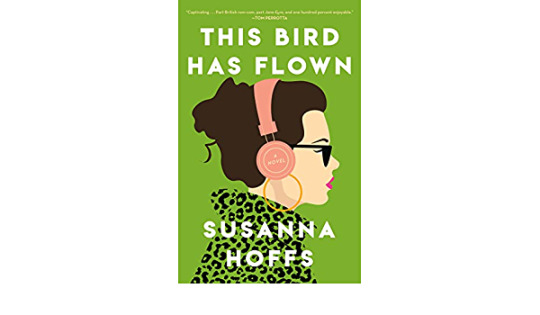
This Bird Has Flown
by Susannah Hoffs
Plot Summary: Jane Start is thirty-three, broke, and recently single. Ten years prior, she had a hit song—written by world-famous superstar Jonesy—but Jane hasn’t had a breakout since. Now she's living out of four garbage bags at her parents’ house, reduced to performing to Karaoke tracks in Las Vegas. Rock bottom. But when her longtime manager Pippa sends Jane to London to regroup, she’s seated next to an intriguing stranger on the flight—the other Tom Hardy, an elegantly handsome Oxford professor of literature. Jane is instantly smitten by Tom, and soon, truly inspired. But it’s not Jane’s past alone that haunts her second chance at stardom, and at love. Is Tom all that he seems? And can Jane emerge from the shadow of Jonesy's earlier hit, and into the light of her own?In turns deeply sexy, riotously funny, and utterly joyful, This Bird Has Flown explores love, passion, and the ghosts of our past, and offers a glimpse inside the music business that could only come from beloved songwriter Susanna Hoffs.
Review:
This Bird Has Flown caught my eye because it takes inspiration from Jane Eyre and the concept of the story sounded fascinating. With the author’s unique perspective to the story as a well-known singer/songwriter just like the main character Jane Start, I felt like this was bound to be a distinctive take on Jane Eyre inspired novels.
What I truly loved about this book was how authentic this perspective felt. Jane Start comes across as a believable and warm character the reader wants to get to know. There are so many layers to her experiences in the music industry - many ups and downs - and Jane shares so much of her vulnerability from the very first chapter making it easy to empathize and understand her. The plot of the novel can sometimes wander, and the impetus of the romance between Jane and Tom sometimes moved too slowly for my tastes, but throughout, the story focused on painting Jane Start as a real, sensitive, and complicated woman. And as the novel is an homage to Jane Eyre, there is no better way to honor the original than to create a heroine as strong, magnetic, and fascinating as Jane Eyre.
And while romance is at the forefront of This Bird Has Flown - it guides Jane Start in making some pretty important decisions quickly once she has connected with Tom Hardy - I think the only drawback to the building of their relationship was in how monotonous it became. The lovely moments of their first meeting and insecurity about each others true feelings was fun, but once they made a commitment to each other, the tension stalled, and Jane and Tom’s relationship has the common flaw of lack of communication. This avoidance of talking about previous relationships seemed more of a needed plot point to stymie their relationship and not so much a believable way they would decide to develop their relationship. This aspect was not a huge issue though, as Jane Start is such a well written character and she is surrounded by interesting and entertaining characters that help move the story along.
Jane’s best friend and manager Pippa is a definite highlight. She is so warm and nurturing, while also needing Jane’s friendship to help her through her own issues, and I loved the dynamic of these two women. There’s also Jane’s friends and brother who are delightful to get to know and helped create some moments of humor and connection throughout the story.
Tom Hardy as a character did feel muted as Jane’s romantic other half. He does have a secret to keep and that means he must remain slightly mysterious, but it was difficult to really understand him as a character, other than that he is charming, English, and intelligent. All great qualities for a romantic interest and that did give the story an alluring escapist romantic quality. I love an idealistic romantic, and Tom fit the bill to a T. I just wished that the reader could dive a little deeper into his character.
As a story that takes some aspects of Jane Eyre, I did want to touch upon the reason for Jane “leaving” Tom. It’s a difficult scenario to recreate in modern versions, as Mr. Rochester in Jane Eyre is unable to get a divorce and that is not usually a problem today. Susanna Hoffs creates an entirely new kind of obstacle that echoes the original novel, but feels very realistic for today and I thought that part was so well done. I felt for Jane, and understood how difficult a situation it was for her. Having a believable reason for Jane to leave Tom was very important to make the story work, and I felt that Hoffs unique take was perfect.
Overall, I really enjoyed the characters and the perspective and unique insight into the music industry that this book provided. The romance is sweet, if a little simple, but by the end I was totally invested in Jane Start’s happy ending, and if the author would consider writing continuing adventures in her life, I think that would be wonderful!
Goodreads Rating: 4/5 stars
I received this book from the publisher or author for a fair and honest review. I was not compensated for this review.
9 notes
·
View notes
Text
Podcast Episode: Jane Eyre 1961
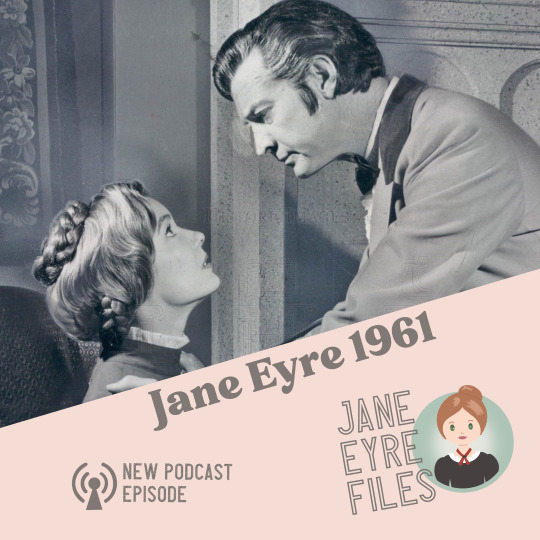
This is a bit of a late post on a recent episode of my podcast Jane Eyre Files where I talked about the 1961 Family Classics episode of Jane Eyre. The audio of this Jane Eyre starring Sally Ann Howes and Zachary Scott is on YouTube now! But unfortunately this version is not available to buy or rent, so there is only the audio to listen to at home.
Although it is available to watch at the Paley Center which is a television museum in New York and Los Angeles. I was able to watch it there a few years ago and I really loved it! My hope is that someday it will be released on DVD or digital. I think it makes some fun changes to the story (Jane gets to talk back to Blanche a little! And St. John is included which is rare for these hour-long American TV adaptations).
Check out the audio of this adaptation on YouTube here:
https://youtu.be/GxHWF0AjC2g
And in the episode of Jane Eyre Files I carry out a discussion of this adaptation This is a special one-off episode as I do the episode solo and showcase all the interesting adaptation changes and unique takes in this version. It’s one of my favorite adaptations, so I hope you’ll enjoy listening to me talk about it!
#Jane Eyre#Charlotte Bronte#Sally Ann Howes#Zachary Scott#Television#Literary Adaptations#Books#Podcasts#Literary Podcast
6 notes
·
View notes
Text
Podcast Postscript: The Last Chapter

On October 6, 2021, I started a new podcast with my husband discussing Jane Eyre chapter by chapter, and on September 14th, we discussed the final chapter. This is something I started just because I felt there was a void in Jane Eyre podcasts that really dive deep into the novel, viewing it on its own terms, like a reader and not just in academic or literary analysis terms. My goal was not to look at the novel critically but to celebrate it and talk about all the things I love.
And it’s bittersweet to come to the end of our discussions of the novel! But looking back, I am so happy with this accomplishment. This is something I can come back to in the future when I feel like revisiting my thoughts on the book, and I hope it gives entertainment to other Jane Eyre fans for a long time to come.
As the original purpose for the podcast comes to a close, I’m not quite ready to say goodbye to it, so Mike and I do plan to continue to podcast about other aspects of Jane Eyre - adaptations and book retellings, and perhaps other random ideas we may have. So future podcast episodes will be sporadic, but I hope that if you are a subscriber to the show, you’ll stay subscribed so you’ll be notified when a new episode drops.
Thank you so much to everyone I’ve talked to online because they listen to the show - it means the world to me that you listen and enjoy the podcast. And especially that you love Jane Eyre as much as I do.
And if you haven’t listened to it yet, give it a try! Now it is ready to binge! :). It’s Jane Eyre Files on all the podcast platforms.
https://anchor.fm/janeeyrefiles
3 notes
·
View notes
Text
I’m interviewed on a new podcast!

Lillian (who co-hosts another podcast about Jane Eyre called Eyrebuds with her friend Piper) had me on her new show talking about my love of Jane Eyre. The premise of the podcast is to talk to people who are really enthusiastic about a variety of things, and today’s ep focuses on my love of Jane Eyre. It was a blast to talk to Lillian about my favorite novel. Please check it out and enjoy!
https://anchor.fm/care-so-much
3 notes
·
View notes
Text
Book Review: Reluctant Immortals
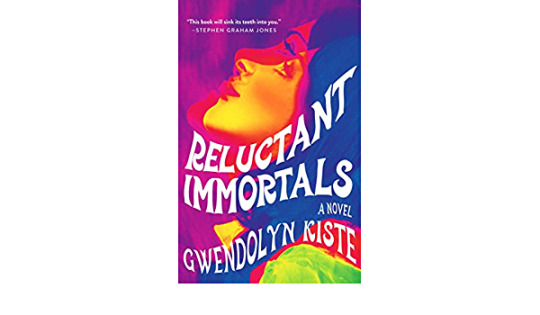
Plot Summary:
Reluctant Immortals is a historical horror novel that looks at two men of classic literature, Dracula and Mr. Rochester, and the two women who survived them, Bertha and Lucy, who are now undead immortals residing in Los Angeles in 1967 when Dracula and Rochester make a shocking return in the Haight-Ashbury district of San Francisco.
Combining elements of historical and gothic fiction with a modern perspective, in a tale of love and betrayal and coercion, Reluctant Immortals is the lyrical and harrowing journey of two women from classic literature as they bravely claim their own destiny in a man’s world.
Review:
Reluctant Immortals presents such a unique take on a Jane Eyre retelling by blending it with Dracula (another favorite tale of mine) and focusing on the poorly used women in the stories - Lucy Westenra and Bertha Mason. Dracula and Mr. Rochester serve as the main villains in the story, and honestly the idea of Rochester as a main villain was initially not my favorite choice, but I can understand how it fits into the story - especially for Bertha.
The story takes on a decadently Gothic atmosphere that comes from the anguish of Lucy and Bertha dealing with the trauma of their former lives, and the death and decay that unavoidably follows Lucy due to being a vampire. The reason for Bertha’s immortality is entirely new and quite horrific, and was definitely an interesting twist! I loved the way the story built on all of their distress and misery because it created so many evocative moments in the tale, and made the reader very sympathetic to their plights. Which is serious, once Dracula and Rochester make their appearances.
There is a nod to the heroine of Jane Eyre as Jane herself plays a part in the story. I was less impressed with this take on her, as she becomes a shell of herself and we see nothing of her independent streak that is in the novel. To be honest, the whole ending of the novel Jane Eyre does not come into play here at all - but the author explains it somewhat as just a version of the truth. The concepts are played out well though, as I find it fun to think that Bertha has seen some of the film adaptations of Jane Eyre and absolutely can’t bear how everyone is depicted.
It’s difficult to talk too much about the plot of this story, because it’s something you need to experience as you read it - I enjoyed how unique the story felt as a retelling or sequel to two famous novels. The author takes these characters and puts her own sophisticated spin on them!
4 stars | Goodreads
Review copy kindly provided by the publisher
#Jane Eyre#Charlotte Bronte#Book Review#Reluctant Immortals#Gwendolyn Kiste#Gothic Literature#Jane eyre retelling
9 notes
·
View notes
Video
I’m so happy to meet another fan of Jayston’s Rochester!
I wish I had asked Michael more about Bequest to the Nation when I saw him - my husband and I recently watched Cromwell and mentioned that to Michael, and he wasn’t too happy with that production it seems, but he did ask us about Bequest to the Nation. I think he felt that was a better film. My husband hasn’t seen it yet, so I am looking forward to showing it to him.
Michael Jayston is a guest on the latest episode of Jane Eyre Files. He is my FAVORITE Rochester, so this is such a special treat for me! I also get to share my story about how I first met Michael Jayston, in such a wild coincidence.
You can find Episode 21 of Jane Eyre Files podcast on all your favorite podcast platforms, or you can check out our website below!
https://anchor.fm/janeeyrefiles
21 notes
·
View notes
Video
Michael Jayston is a guest on the latest episode of Jane Eyre Files. He is my FAVORITE Rochester, so this is such a special treat for me! I also get to share my story about how I first met Michael Jayston, in such a wild coincidence.
You can find Episode 21 of Jane Eyre Files podcast on all your favorite podcast platforms, or you can check out our website below!
https://anchor.fm/janeeyrefiles
#Jane Eyre#Charlotte Bronte#Jane Eyre Files#Podcast#New Podcast#Michael Jayston#Interview#Period Drama
21 notes
·
View notes
Text

I drew this interpretation of a Disney adaptation of Jane Eyre because on my Jane Eyre Files podcast, we will sometimes have my husband Mike read as Mr. Rochester in different celebrity voices, and in our episode this week he did it as Mickey Mouse and that really made us laugh. So I wanted to see what that would look like. 😄 Minnie would make a very cute Victorian governess!
#Jane Eyre#Charlotte Bronte#Mickey Mouse#Minnie Mouse#Jane Eyre Files Podcast#Podcast#Disney#disney animation#Walt Disney#Literary Adaptations
10 notes
·
View notes
Note
Hello, I want to ask for help! 😭 Tomorrow I need to submit an essay about The representation of nature in Jane eyre. I didn't write anything yet. Please if there's any tip or advice please tell me. Thank you.
I think there is an interesting literary analysis of Jane Eyre though the elements of earth, air, fire, and water. Where Jane's time with the Reed family and Gateshead = Earth (a heavy time for Jane, her soul is buried by the weight of the Reeds' disregard for her and their inability to look beyond themselves.). Lowood represents air, where Jane gains knowledge, and is in many ways more free to be herself than before. Thornfield = fire, with her all consuming and passionate love, and let's not forget the actual fire that occurs in the story. Her time with the Rivers family = water, and how fun that their last name is Rivers. Some of her passionate nature is quenched under St. John's religious calling, but Jane overcomes and encorporates all of these elements to become fulfilled and whole by the end.
A lot of this is much better explained in a book called Myth and Allegory in Jane Eyre by Elizabeth Imlay - one of my favorite literary interpretations of the novel.
Now please go write your essay!
3 notes
·
View notes
Text
Podcast Postscript: Chapter 16

In Chapter 16, Jane draws her own portrait to compare to her version of Blanche Ingram - just to remind herself that Mr. Rochester could never be interested in her. The three miniseries adaptations have their own versions of Jane’s portrait, and as always I love comparing the different adaptations.
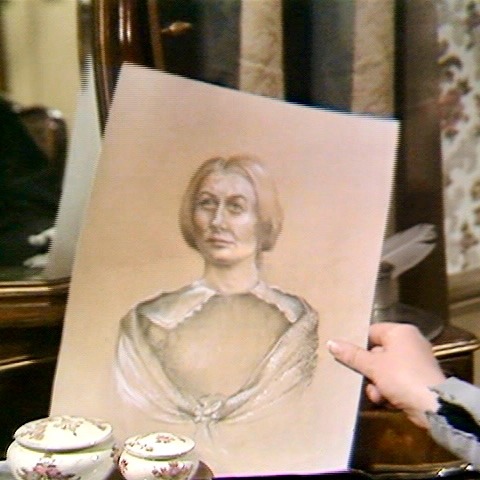
Here we have the 1973 interpretation - where Jane really shows how little she thinks of her appearance. Jane seems aged in this drawing! I do love how the 1973 version brings attention to the fact that Jane is deliberately drawing herself to disadvantage.

This is from the opening credits of the 1983 version, so this is more of a true portrait of Jane. It’s nice to see Mr. Rochester peeking in from the corner as well!
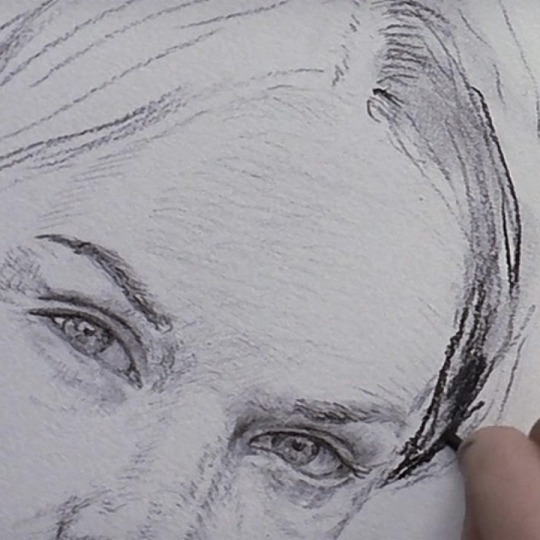
This is the 2006 miniseries, and Jane is being drawn very true to life. I do love how they focused on her very clear and piercing eyes. Something I’m sure Mr. Rochester is drawn to as well.
We talk about Chapter 16 and the romance and mystery brewing at Thornfield in the latest episode of the Jane Eyre Files Podcast.
#Jane Eyre#Charlotte Bronte#Jane Eyre 1973#Sorcha Cusack#Michael Jayston#Jane Eyre 1983#Zelah Clarke#Timothy Dalton#Jane Eyre 2006#Ruth Wilson#Toby Stephens#Podcast#Literary Adaptations#Period Drama#Book Podcast
25 notes
·
View notes
Text
Podcast Postscript: Chapter 14
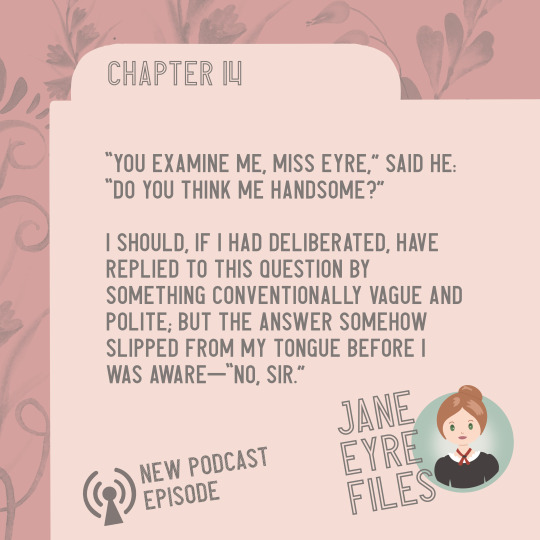
In Chapter 14 of Jane Eyre, Charlotte Brontë references the pseudo-science of Phrenology when Mr. Rochester further questions Jane about his appearance:
“Criticise me: does my forehead not please you?”
He lifted up the sable waves of hair which lay horizontally over his brow, and showed a solid enough mass of intellectual organs, but an abrupt deficiency where the suave sign of benevolence should have risen.
By Jane calling attention to a “deficiency” where the sign of benevolence should have been, she is thinking in terms of phrenology where studying the size and shape of your head is supposed to reveal your character and personality since certain areas of the brain and skull were assigned different characteristics.

Charlotte was interested in the ideas of Phrenology, although it’s not clear how much of it she full-heartedly believed. In 1851 her publisher, George Smith, took her to a well known phrenologist in London to have her head analyzed. She did so anonymously though, and the phrenologist - Dr. T. P. Browne - only knew her as a Miss. Fraser.
In George Smith’s memoir he included the full analysis by Dr. Browne which is very extensive, but full of generalizations that was probably engineered to make any woman feel flattered. I’ll include the text below, but before that, I’ll link up the latest episode of our podcast Jane Eyre Files! Enjoy our discussion of Chapter 14.
Here is the full text of Charlotte's phrenological assessment:
A PHENOLOGICAL ESTIMATE OF THE TALENTS AND DISPOSITIONS OF A LADY.
Temperament for the most part nervous. Brain large, the anterior and superior parts remarkably salient. In her domestic relations this lady will be warm and affectionate.
In the care of children she will evince judicious kindness, but she is not pleased at seeing them spoiled by over-indulgence. Her fondness for any particular locality would chiefly rest upon the associations connected with it. Her attachments are strong and enduring--indeed, this is a leading element of her character; she is rather circumspect, however, in the choice of her friends, and it is well that she is so, for she will seldom meet with persons whose dispositions approach the standard of excellence with which she can entirely sympathise. Her sense of truth and justice would be offended by any dereliction of duty, and she would in such cases express her disapprobation with warmth and energy; she would not, however, be precipitate in acting thus, and rather than live in a state of hostility with those she could wish to love she would depart from them, although the breaking-off of friendship would be to her a source of great unhappiness.
The careless and unreflecting, whom she would labour to amend, might deem her punctilious and perhaps exacting; not considering that their amendment and not her own gratification prompted her to admonish. She is sensitive and is very anxious to succeed in her undertakings, but is not so sanguine as to the probability of success. She is occasionally inclined to take a gloomier view of things than perhaps the facts of the case justify; she should guard against the effect of this where her affection is engaged, for her sense of her own importance is moderate and not strong enough to steel her heart against disappointment; she has more firmness than self-reliance, and her sense of justice is of a very high order.
She is deferential to the aged and those she deems worthy of respect, and possesses much devotional feeling, but dislikes fanaticism and is not given to a belief in supernatural things without questioning the probability of their existence.
Money is not her idol: she values it merely for its uses; she would be liberal to the poor and compassionate to the afflicted, and when friendship calls for aid she would struggle even against her own interest to impart the required assistance indeed, sympathy is a marked characteristic of this organisation.
Is fond of symmetry and proportion, and possesses a good perception of form, and is a good judge of colour. She is endowed with a keen perception of melody and rhythm. Her imitative powers are good, and the faculty which gives manual dexterity is well developed. These powers might have been cultivated with advantage. Is a fair calculator, and her sense of order and arrangement is remarkably good. Whatever this lady has to settle or arrange will be done with precision and taste.
She is endowed with an exalted sense of the beautiful and ideal, and longs for perfection. If not a poet her sentiments are poetical, or are at least imbued with that enthusiastic glow which is characteristic of poetical feeling. She is fond of dramatic literature and the drama, especially if it be combined with music.
In its intellectual development this head is very remarkable. The forehead is at once very large and well formed. It bears the stamp of deep thoughtfulness and comprehensive understanding. It is highly philosophical. It exhibits the presence of an intellect at once perspicacious and perspicuous. There is much critical sagacity and fertility in devising resources in situations of difficulty, much originality, with a tendency to speculate and generalise. Possibly this speculative bias may sometimes interfere with the practical efliciency of some of her projects. Yet since she has scarcely an adequate share of self- reliance, and is not sanguine as to the success of her plans, there is reason to suppose that she would attend more closely to particulars, and thereby present the unsatisfactory results of hasty. generalisation. This lady possesses a fine organ of language, and can, if she has done her talents justice by exercise, express her sentiments with clearness, precision, and force- sufficiently eloquent but not verbose.
In learning a language she would investigate its spirit and structure. The character of the German language would be well adapted to such an organisation. In analysing the motives of human conduct, this lady would display originality and power, but in her mode of investigating mental' science she would naturally be imbued with a metaphysical bias; she would perhaps be sceptical as tothe truth of Gale's doctrine. But the study of this doctrine, this new system of mental philosophy, would give additionalstrength to her excellent understanding by rendering it more practical, more attentive to particulars, and contribute to her happiness by imparting to her more correct notions of the dispositions of those whose acquaintance she may wish to cultivate.
T. P. BROWNE, M.D.
367 Strand, June 29, 1851.
#Jane Eyre#Charlotte Bronte#Podcast#Jane Eyre Files#Phrenology#Pseudo-science#Literature#English Literature
5 notes
·
View notes
Text
Podcast Postscript: Chapter 13

There is rampant symbolism in the novel Jane Eyre, and in the latest episode of the podcast, Mike and I discuss the potential meanings behind Jane’s three paintings. They seem to reveal something of her mindset at the time or they foreshadow something coming later in the book.
First painting: of a shipwreck featuring a cormorant holding a gold bracelet in its beak, and a drowned woman’s arm and wrist above the waves.
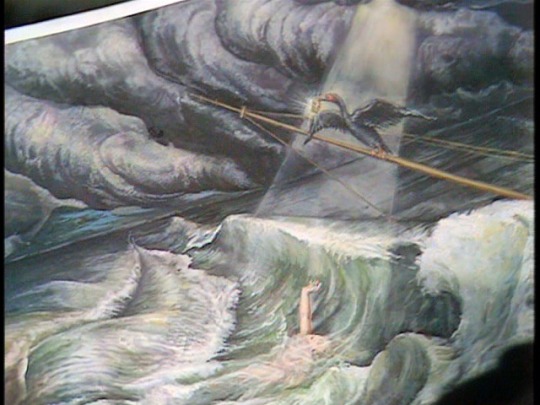
Rendition from the 1973 miniseries adaptation

Rendition from the 1983 miniseries adaptation
There is a bird reference again - which features many times in the book. This is thought-provoking imagery to have the woman drowned and the bird able to take her possessions and fly free. Another allusion to the limitations put on women.
Second painting: a woman blending into the twilight sky, her head crowned with stars.
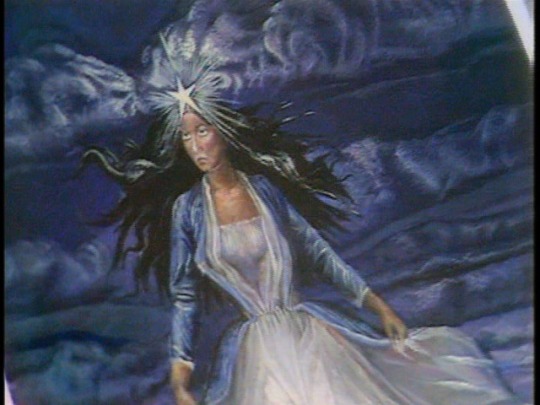
Rendition from the 1973 miniseries adaptation
Mr. Rochester references the Greek legend of Selene and Endymion when he mentions Mt. Latmos. In the story the goddess Selene falls in love with Endymion and vows to protect him forever. This seems to foreshadow Jane’s potential commitment to Rochester. Although Rochester is the one to connect it to Latmos, so is he hoping Jane will fulfill this role?
Third painting: A colossal head resting against an iceberg with two hands supporting the head and drawing a dark veil against it.
Jane uses these lines to describe this painting: “the likeness of a kingly crown;”…“the shape which shape had none.”’ - which are quotes from Paradise Lost by John Milton.
Although I’ve not read Paradise Lost - I’ve read online that these words draw on descriptions of Satan and Hell in that book - such a dark and forbidding tone for a schoolgirl’s paintings. Her thoughts are full of despair, but do these images also foreshadow some of her and Mr. Rochester’s suffering to come?
I absolutely love analyzing this book, and if you would like to hear more, please listen to our discussion of Chapter 13 of Jane Eyre Files.
#Jane Eyre#Charlotte Bronte#Paintings#Podcast#Jane Eyre Files#Art#Symbolism#Victorian Literature#Jane Eyre 1973#Jane Eyre 1983
14 notes
·
View notes
Text
Podcast Postscript - Chapter 11

Mike and I discuss the fact that we get an extensive physical description of Jane in this chapter, and I’d like to follow that train of thought, with this excerpt from one of Charlotte Brontë’s letters where she answers the question of if she would illustrate an edition of her novel. She said in response to her publisher William S. Williams, in a letter dated March 11, 1848:
“As to your second suggestion, it is, one can see at a glance, a very judicious and happy one; but I cannot adopt it, because I have not the skill you attribute to me. It is not enough to have the artist's eye; one must also have the artist's hand to turn the first gift to practical account. I have, in my day, wasted a certain quantity of Bristol board and drawing-paper, crayons and cakes of colour, but when I examine the contents of my portfolio no, it seems as if during the years it has been lying closed, some fairy had changed what I once thought sterling coin into dry leaves, and I feel much inclined to consign the whole collection of drawings to the fire; I see they have no value. If then "Jane Eyre" is ever to be illustrated it must be by some other hand than that of it's author. But I hope no one will be at the trouble to make portraits of my characters: Bulwer- and Byron- heroes and heroines are very well - they are all of them handsome-; but my personages are mostly unattractive in look and therefore ill-adapted to figure in ideal portraits -- At the best, I have always thought such representations futile.”
I would have LOVED to have seen Charlotte’s own portraits of the characters - it would really satisfy my curiosity of what they should look like.
And I also mention this police sketch of Jane Eyre from the blog The Composites which is drawn from the descriptions of Jane throughout the book. What do you think of this rendition of Jane?
As always, we much appreciate your listening to the podcast! Check out the latest episode here:
1 note
·
View note
Text
Podcast Postscript: Chapter 10

We discuss Chapter 10 in the latest episode of Jane Eyre Files, and we get to see Jane making things happen for herself, by advertising for a position as governess. Of course things only get more interesting from there.
Jane makes a point of mentioning the salary offered for the new position - £30 per annum, or per year. A great increase since she only gets £15 per annum at Lowood. Now both jobs provide room and board, so there really isn’t much living expenses Jane has to worry about - but I was curious to put that salary into perspective for the time.
According to Old Bailey Online, “wages for eighteenth-century women could range from the £2 or so mentioned above to between £6 and £8 for a housemaid, and up to £15 per annum for a skilled housekeeper.” Of course women earned less than men, as a “footman could expect £8 per year, and a coachman anywhere between £12 and £26.
And according to the Victorian Web a woman’s dress in 1888 cost £35/8s/4d. (s=shilling, d=pence) More than a year’s salary for one dress! Although that cost is for a fancier dress or the average salary went up by 1888.
The numbers seem very small in comparison to what we work with today, but apparently the £20,000 she will get later equals about £2.24 million today. I would definitely be happy with that much of a windfall!
Check out our latest episode of the podcast on your favorite podcasting platform:
#Jane Eyre#Charlotte Bronte#Podcast#Jane Eyre Files#Cost of Living#Victorian England#Literature#Books
3 notes
·
View notes